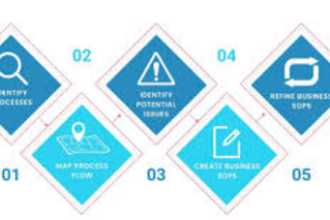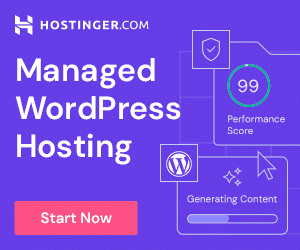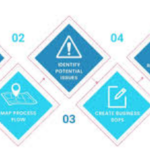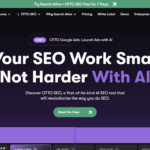I will talk about Top Newsletter Platforms & Software in this article which is used by creators, companies, and marketers to communicate with their audiences more effectively.
If you’re starting a newsletter, working to grow your email list, or looking to improve your engagement with your audience, these platforms have the tools, automation, and dependable performance to help you achieve your objectives.
What is Newsletter Platforms?
As a digital resource, newsletter tools enable users to create, personalize, and oversee email publications. They can be used by companies and other creators to manage and dispatch targeted electronic communications.
They assist users with email marketing by providing user-friendly design, automation, segmentation, and performance tracking features.
They also facilitate seamless communication by providing a way to sent tailored messages to subscribers as custom and brandable email newsletters. newsletter tools are indispensable to building a brand, and providing timely and relevant communications to subscribers.
Why Use Newsletter Platforms & Software
Easy Email Creation: Start from scratch or use a template with a drag and drop email editor with a newsletter builder.
Automation: Nurture your customers automatically, schedule your emails, and set up drip campaigns.
Audience Segmentation: Engagement goes up when you personalize your messages and increase relevancy by targeting smaller audience segments.
Analytics & Insights: Make meaningful, informed decisions based on open rates, click-throughs, and conversions.
Scalability: Perform and maintain your efficiency whether small lists or large databases.
Integrations: Link with your social media tools, websites, and CRM and e-commerce software.
Better Deliverability: Your emails are more likely to make it to the inbox, not the spam folder.
Key Point & Best Newsletter Platforms & Software List
| Newsletter Platform | Key Point |
|---|---|
| Mailchimp | All-in-one email marketing tool with powerful automation and templates. |
| ConvertKit | Best for creators with easy automation and tag-based subscriber management. |
| Beehiiv | Modern newsletter platform with growth tools, referrals, and monetization features. |
| Substack | Simple publishing platform focused on paid newsletters and creator monetization. |
| MailerLite | Easy-to-use platform with clean designs, automation, and affordable pricing. |
| GetResponse | Advanced marketing suite with funnels, webinars, and powerful automation. |
| Campaign Monitor | Professional email builder with strong segmentation and analytics. |
| Moosend | Budget-friendly tool offering automation, personalization, and fast delivery. |
| AWeber | Reliable email marketing platform with proven deliverability and simple tools. |
| Omnisend | E-commerce-focused platform offering automation and multi-channel campaigns. |
1. Mailchimp
Mailchimp stands apart from other types of newsletter platforms and software due to its particular mixture of ease-of-use and functionality. Even novice users and small businesses can easily take advantage of fully-featured marketing automation software.
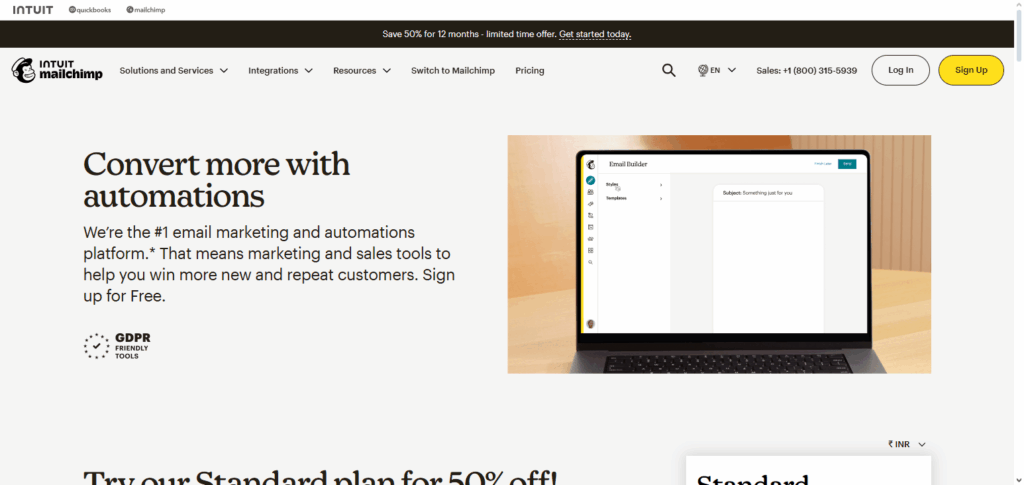
With smart audience insights and automated workflows automating nearly all newsletter workflows, users are able to easily create newsletters that are engaging. However, what really stands out from the other competitors to Mailchimp is the all-in-one software approach that provides content creation, basic crm functionality, and analytics all in the same interface.
All of this makes campaign management and subscriber performance tracking a breeze. With all of the speed and flexibility Mailchimp offers, its no wonder marketing professionals consider them the best in the biz.
Pros & Cons Mailchimp
Pros
- Analytics and automation are neatly integrated with functionality and work flow.
- Foremost with industry value-add.
- Sophisticated- all products and services integrated.
Cons
- When first starting with large and growing contact lists … should build out offers gradually use a lower tiered plan.
- Beginning use with a more advanced platform and features requires extra time invested for learning – can feel overwhelming
- Costs increase with each tier.
2. ConvertKit
ConvertKit is one of the best platforms for newsletters and email software. It was designed for creators and meant for simplicity while maintaning functionality and control.

ConvertKit integrates a tag-based subscriber system which fully customizes the subscriber experience. ConvertKit even has a visual builder for automation to design email journeys for subscribers’ mindsets.
While many platforms like to focus on servicing creators and email software for newsletters, ConvertKit seeks to service and help you grow with fully-formed commerce options and even subscription functionality. All of this makes ConvertKit perfect for writers, educators, and digital entrepreneurs to build relationships with their audiences.
Pros & Cons Convertkit
Pros
- Custom tagged automation for subscribers is industry-leading.
- Unified and clean platform.
- Particularly strong for digital products and creators.
Cons
- Design advanced features at the high and growing pricing.
- Competing services – fewer templates are available.
- Overall limited design and customization options.
3. Beehiiv
Beehiiv is one of the best newsletter platforms due to its range of modern design and powerful features in a creator-friendly environment. This is because of the monetization and built-in tools the site helps creators use.
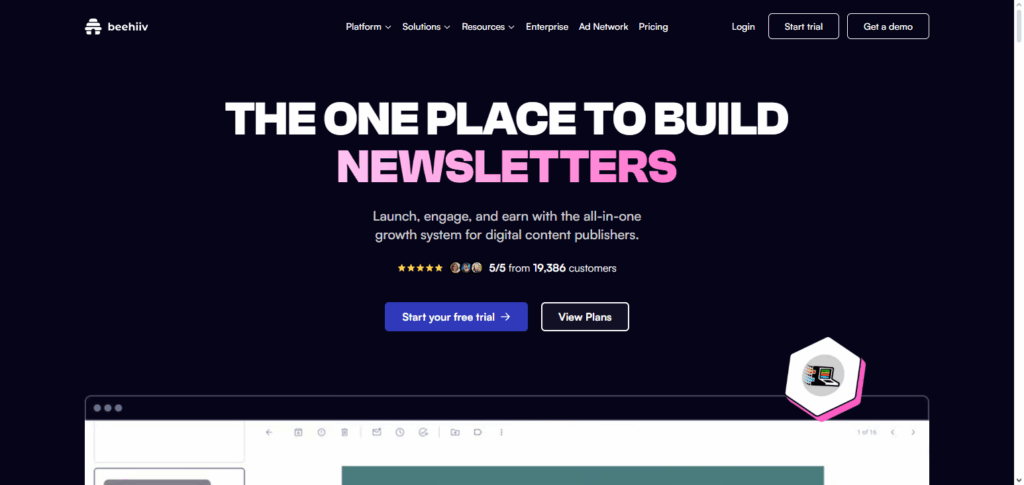
What distinguishes Beehiiv from the others is the referral system. This system encourages newsletters to grow organically and rewards readers for referrng newsletters to others. Beehiiv is also very good at providing overwviews of their , performance dashboards, providing custom domains, and audience segmentation and publishing, and does all this, while not complicating the process at all.
Beehiiv helps create newsletters at scale, which is perfect for the media brands and creators because of all the tools they integrated to help expand audience and revenue at ,sponsorship, ad networks, and marketplace. Everything is in one place.
Pros & Cons Beehiiv
Pros
- Monetization is integrated and quite easy.
- Modern and functional for writers.
- Competing services – fewer templates are available.
Cons
- Design and customization features are limited.
- Integrations still expanding.
- Not a large number of advanced automations implementable.
4. Substack
Substack is great among newsletter providers because it has a simple layout that allows for a non-distracting environment to help users focus on writing and publishing.
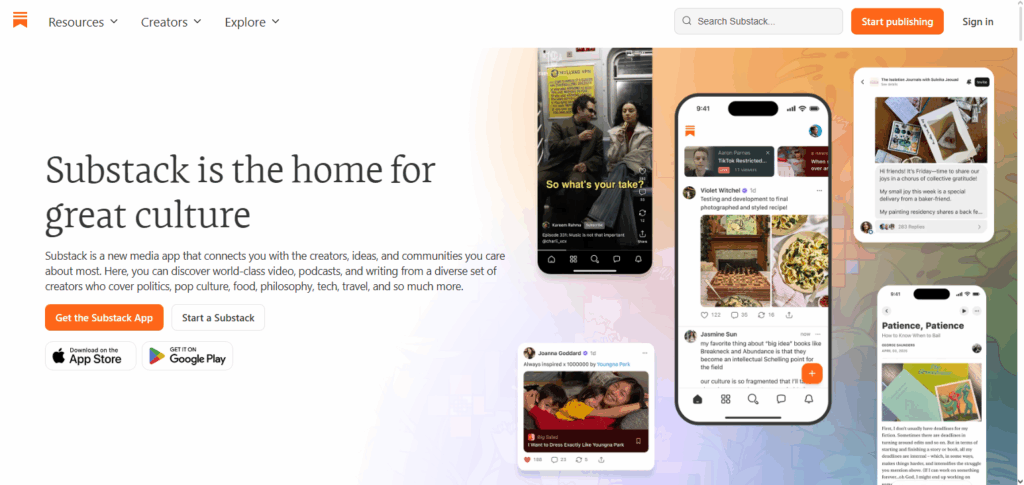
Its best features is that it has a subscription and payment system so creators can easily start a paid newsletter without needing to use other outside programs. Substack does all the publishing and payment processing so writers can focus on content creation.
The company also allows for podcasts, community engagement, and the creation of custom logos, so it is a great option for all types of indepent creators. Substack has an easy UX, good monetization features, and a system that connects authors to a userbase. Substack let’s people write and manage subscription based media.
Pros & Cons Substack
Pros
- Community and discovery is strong and user-friendly to implement.
- Published and set up work is easy and minimal.
- Paid subscription system is integrated.
Cons
- Fee structures tied to newsletters are fundamental.
- Designed to limit marketing features.
- Customization is limited for features.
5. MailerLite
Out of all the email platforms, MailerLite is the best when it comes to executing and email automation and newsletters. MailerLite has the best newsletters and the best email marketing options.

MailerLite has a user friendly layout that has all of the campaign creation marketing automation tools on the left side of the screen and the widgets, tile, and marketing ads on the right side so the users focus on the marketing ads while the email tools conveniently stay on the left.
It is hard not to be impressed by the performance of MailerLite and all of the automation features like landing pages and audience segmentation. Overall, email marketing campaign presentations and the slide bar segmentation, MailerLite ends up being the most valuable email platform to convey a message digitally.
Pros & Cons Mailerlite
Pros
- Designed automation and easy use is a strength.
- Set pricing is more attainable and affordable.
- Good landing pages and automation are available.
Cons
- Simpler designs are available and overall are limited compared with others.
- Integrations are also fewer.
- Advanced analytics are also quite limited.
6. GetResponse
GetResponse has wonderful software for newsletters and other email marketing offers like tools for a full marketing funnel. One of its functions is creating and customizing a marketing funnel.

GetResponse is a platform that helps users capture leads, send follow up emails and generate sales. The platform offers high-level automation tools that recommend actions (based on user behavior), landing pages and segmenting of customers.
The software is great for customer retention. They report (as their competitors do) encouraging (not to say unrealistic) sales figures to demonstrate their effectiveness. Their analytics are better, probably due to the emphasis on sales (unlike their competitors), to increase subscription retention. This is a good software platform for all marketers.
Pros & Cons GetResponse
Pros
- Available marketing is bundled and includes a funnel.
- Advanced automation with segmentation.
- Leading features for analytics.
Cons
- More crowded interfaces can be overwhelming for new users.
- Competing platforms offer more advanced features.
- Overarching design more plain and streamlined compared to others.
7. Campaign Monitor
Campaign Monitor strikes the perfect balance between functional design and the marketing toolbox as a result of the elegant design products, sophisticated marketing capabilities, and seamless integrations of software components.
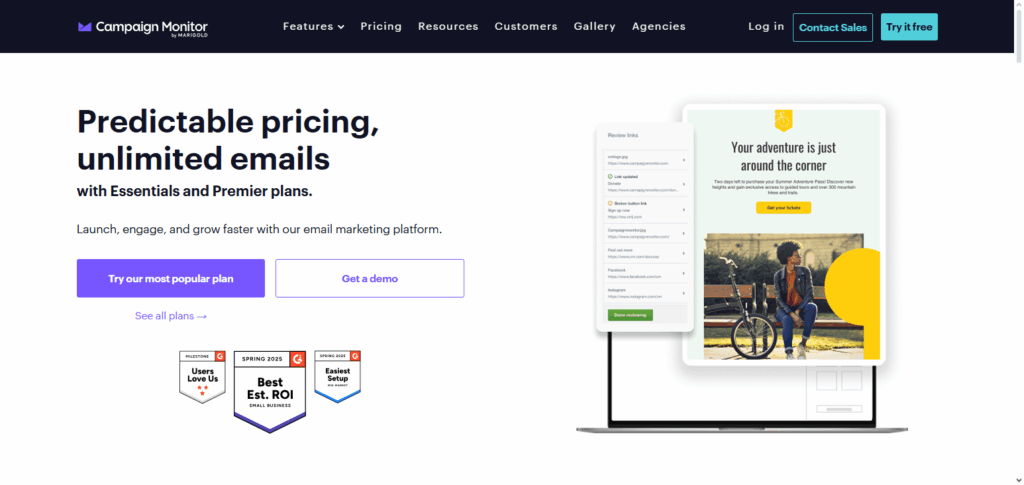
Campaign Monitor allows users to design emails effortlessly, branding emails as they wish, and using the pre-set templates without any expert design knowledge. List segmentation is one of the areas Campaign Monitor’s competitors always fall short of. Even after segmenting the list for a specific campaign, knowing where to send it to guarantee a higher level of audience engagement is the real x-factor.
Analytics are clear to users, and the emails are always delivered. Because Campaign Monitor is small enough to feel like a bootstrapped startup, and advanced enough to feel corporate, they are dialed into the characteristics of the customer. This makes them the ideal option for those brands that need an expert, compute emails.
Pros & Cons Campaign Monitor
Pros:
- Lovely customizable email designs
- Great tools for audience segmentation
- Strong deliverability
Cons:
- Pricing tied to features are on the expensive end
- Free plan is quite restricted
- Competitors offer more automations
8. Moosend
Moosend is considered one of the best newsletter platforms and software for its voice automation and personalization to a great extent for affordable pricing. One of the platforms very great features is the AI-driven recommender system where users tail their emails based on previous subscriber behavior for improved engagement with no manual work.
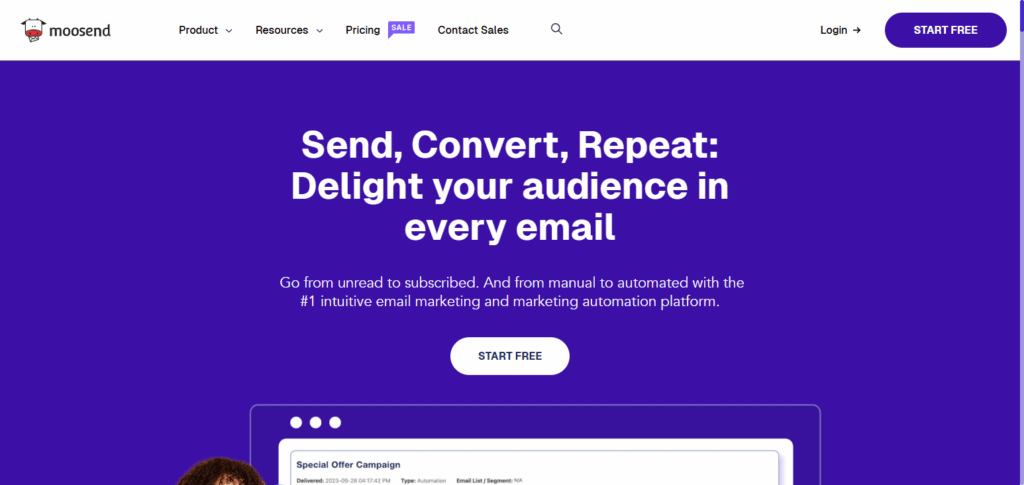
For all users, both small and growing, Moosend includes a drag and drop email editor, email segmentation, instant email, and on analytics. Moosend is one of the only truly simple email marketing platforms with top enterprise features allowing their users to target their email campaigns with no efforts on their part.
Pros & Cons Moosend
Pros:
- Great pricing and value
- AI suggests recommendations
- Intuitive and quick to use editor
Cons:
- Not as large of an integration ecosystem
- Some more advanced tools have a learning curve
- Limited options for branding
9. AWeber
AWeber is exceptional as far as newsletter platforms and software are concerned. I mean, just look at the interface. One of the best out there, and the tools offered are incredibly simple. With this, the deliverability is IMPECCABLE.
Emails get sent and arrive at the destination inbox without fail. One of the best features offered are the pre written automations and email templates for launching campaigns. AWeber does all the work so you don’t have to touch any designs.
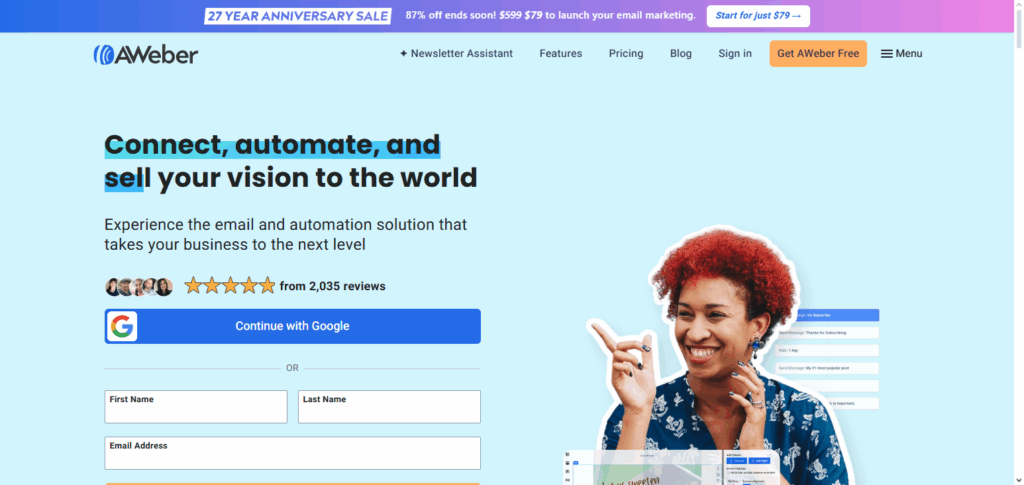
The tagging system is as simple as it gets, along with the landing page creator, and the analytics offered are simply sent to the creator/business so they can run reports on subscriber behavior. I have never encountered a more stable software solution for this field of work.
If you want to run an email marketing campaign, look no further and simply go with AWeber. The email marketing campaignumentation and support are on outstanding levels. The email marketing support and documentation are simply on a whole different level. Use AWeber.
Pros & Cons AWeber
Pros:
- Large selection of template designs
- Functional and reliable platform
- Good customer service
Cons:
- Dated interface of the platform
- Competitors have more advanced automation
- Missing a variety of new features
10. Omnisend
Omnisend is one of the best newsletter platforms and software because of its focus on helping e-commerce brands build personalized and impactful customer journeys.
Their niche automation is the multis channel approach where users can combine email and sms and push within the same workflow for more seamless and consisntent communication across platforms.

Omnisend also provides product based recommendations, content blocks, and segmentation that is on folks for online stores.
With sales driven analytics, quick implementation and major e-commerce platforms, the platform arms businesses with the tools for targeted email marketing that drives conversions and enhances rapport with customers.
Pros & Cons Omnisend
Pros:
- Multi-channel messaging: email, SMS, push
- Great automation for e-commerce
- Good recommendations for products
Cons:
- SMS usage may increase costs
- Not the best for creators outside e-commerce
- Limited to no options for design customization
Conclusion
Renewing a subscription with the best newsletter software and platform for your needs best depends on your current goals and objectives. All the major software platforms currently available on the market have their pros and cons.
They will help you streamline communication and automate marketing via newsletters while helping you grow your audience. Any creator, small business, or even large operation will need the deployment of professional emails at scale. Automation, audience segmentation, analytics, and easy-to-use design tools for email marketing are essential in any platform and need to be in the most customized option for your business.
Whether it be a writing-first platform with other add-ons or a comprehensive marketing email suite, you will have the choice supporting you in your long-term growth for the right email marketing platform on the market helps you transform your audience needs into engagement and sales.
FAQ
Which platform is best for creators?
ConvertKit and Beehiiv are ideal for creators because they offer growth tools, tagging systems, and monetization options.
What platform is best for e-commerce?
Omnisend and GetResponse are strong choices thanks to their automation, product recommendations, and deep e-commerce integrations.
Do newsletter platforms offer free plans?
Yes, many platforms like Mailchimp, Beehiiv, and MailerLite offer free tiers with essential features.
What is a newsletter platform?
A newsletter platform is a tool that allows you to create, send, and manage email newsletters while offering automation, analytics, and audience management features.
Which newsletter platform is best for beginners?
MailerLite and AWeber are great for beginners due to their clean interfaces and easy-to-use tools.

